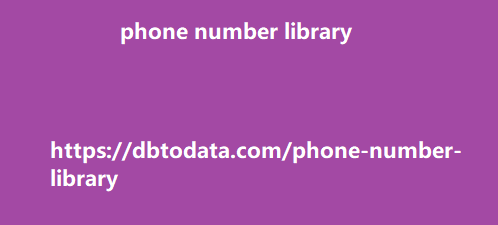The Basic Plan is great for individual SEOs and Bloggers, the Personal Plan is great for PPC marketers and Affiliate marketers, and the Advanced plan is perfect for agencies. paid plans, you can try each three of them for 14-days free. Here’s the full list of prices and features. Free: 1 Website 1 Affiliate network Up to 5,000 sessions per month Google Analytics Integration Facebook Pixel Integration Basic Plan (50$ Monthly): 1 Website 3 Integrations 12 Months of Data Retention 50,000 Sessions Included Google Analytics Integration Facebook Pixel Integration Personal Plan (150$ Monthly): 3 Websites Unlimited Integrations 12 Months of Data Retention 500,00 Sessions Included Google Analytics Integration Facebook Pixel Integration Google Ads Integration Facebook Conversion API Ad Networks Support Webhooks Advanced (300$ Monthly) 10 Websites Unlimited Integrations 12 Months of Data Retention Hidden text is widely known to be a black-hat practice hated by Google simply because it’s spammy and manipulative.
It makes use of methods to primarily deceive
the crawlers to hopefully make a page rank better. This is a very old technique that was abused a few years back. Since times have changed, Google has multiple algorithms and security checks in place to make sure that websites making use of this spammy tactic get penalized as soon as possible. However, there are fine lines between spammy hidden text and hidden text meant to improve the experience of the users inside your site. The latter being a great practice that could take your SEO to new heights. Let’s talk about that here. What is Hidden Text? Hidden text means that a webmaster intentionally hid text that isn’t visible for the visitors but crawlers could view it as being the actual content of the page.
The reasoning behind this is because
spammers and black-hat SEOs intended to take advantage of the simple ranking algorithm back in the day where they would create content meant to convert the users while serving a keyword-heavy and stuffed piece of content for the crawlers in hopes of making their page rank better. Since the algorithm was very simple and straightforward back then, a lot of black-hat strategies came into fruition during that time. Hidden text is one of the more famous ones. It’s a simple act of deception that usually works if done properly. But the tactic isn’t applicable today since the algorithms have evolved to a much more complex and concept-focused approach than the simple and text-focused approach it used to take.
Strategies Making Use of Hidden Text for SEO
The reason why I’m writing this article is because the SEO Hacker blog uses some type of hidden text. Even for some of our landing pages, there are instances where we use a type of hidden text. Don’t misunderstand, we’re not using the spammy kind of hidden text. What we’re using is a tactic that improves dwell time, pageviews, sessions, etc. We purposely make some of our content not visible to encourage more clicks and for the users to spend a longer time on the website. Although this wasn’t our initial intention, it became an integral part of our homepage design. Here’s what it looks like on mobile: SEO Hacker Mobile Homepage Screenshot This does not seem as hiding text at first sight because it’s not.
It’s us, making text not visible instead
of hiding it. There’s a clear distinction bulgaria phone number library between initially making text not visible while intentionally hiding content altogether. What we’re doing is making the text not visible immediately but the user can access the content if they click on the [Read more…] button. If this was a type of spammy hidden text, we’d hide the content altogether and not give users a chance to view them. Some SEOs might argue that this is still hiding text. But what people often forget is that hidden text becomes spammy once there’s manipulation and deception played – when there’s a clear difference between what the crawlers see and what’s visible to the users.
Here’s another example of making content
not visible to the users: Accordion type hidden content screenshot This accordion is a part of one of SEO Hacker’s landing pages. If a user clicks on the arrow, it opens it up and shows a comprehensive piece of content that answers the questions displayed. This could be understood as hiding content as well. Google also confirmed a few years back that they still index content inside an accordion-style design. While this still is an accepted form of “hidden” text and still works as intended, we decided to remove the accordion-type content altogether and fully augment that specific landing page. It wasn’t a problem with the hidden text, but we believe that content is easily more crawlable when it’s immediately accessible.
Key Takeaway Although the traditional
kind of hidden text still retains its care in medical clinics spammy and manipulative nature, innovations on design and development have led to a more effective UI/UX making use of the meaning of “hidden text”. In SEO, one of the ways to signify the growth of the website is to identify the amount of content that is added over time. However, there will be cases where you would want to remove some of your content from Google’s index. URL removals from Google Search is a normal process and there are more ways than one to do it. It is not a complicated process but it is important to follow the process correctly to avoid negatively affecting your SEO.
In this article, I will take you through
everything that you need to know how dating data to remove a URL of a website that you own on Google Search. When should you remove URLs from Google Search? Duplicate Content There may be occurrences where you accidentally publish duplicate content on your website. Removing the URL/s that have the duplicate content from Google Search avoids the risk of getting a penalty. Outdated Content If you have a website that has been running for a few years now, chances are there are some outdated content on your website such as old blog posts. pages that are not available anymore or old promotions that have expired.

